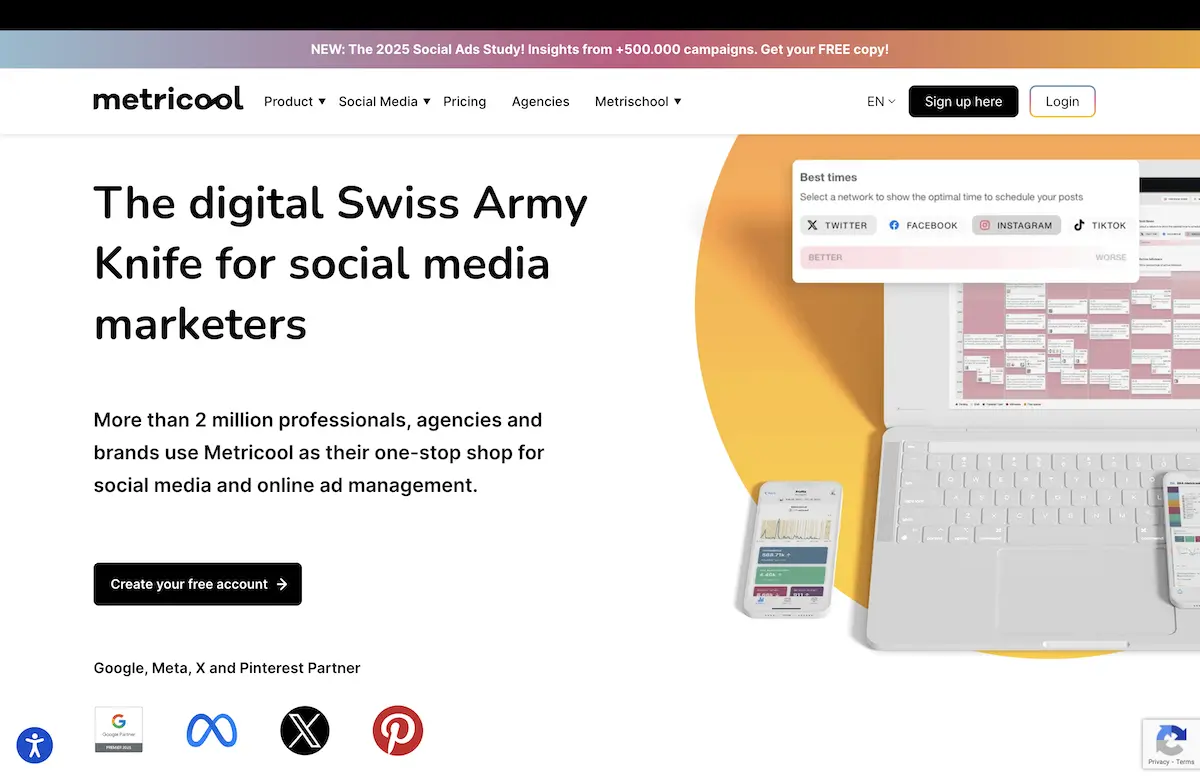Why does multichannel marketing matter? Reaching your audience used to mean sending an email or running a web ad. Now, your prospects are everywhere. Social media, podcasts, streaming TV, and more. They’re not just searching Google. They’re discovering brands on social networks like Instagram, YouTube, and even digital billboards.
For Web3 businesses, this shift is even sharper. Your buyers are early adopters, tech-savvy, and wary of traditional ads. If you want their trust and attention, you need to meet them where they are, with a clear and consistent message.
A multichannel marketing strategy helps you do just that. You’re not relying on one platform. Instead, you’re showing up across several, giving your audience more chances to notice, trust, and choose your brand.
What Is Multichannel Marketing?
Multichannel marketing means connecting with your audience through several platforms at once. These might include:
- Email campaigns
- Social media posts
- Podcasts or audio ads
- TV or streaming ads
- Native ads and remarketing
- In-person events or out-of-home advertising

Example:
Barr Drinks (owner of Irn Bru) ran a campaign using TV, digital, and social media to reach 90% of young adults in Scotland and northern England. Their message was everywhere: TV, outdoor ads, social feeds, and digital banners.
Thanks to Kath D Art for this picture.
Nike blends online and offline experiences:
- Website and app for exclusive content and product customization
- Social media for stories and product launches
- Physical stores with AR and personalized shopping
Multichannel vs. Omnichannel: What’s the Difference?
- Multichannel:
- Uses several platforms, each with its own strategy
- Example: Someone sees your ad on Instagram, then buys from your website
- Omnichannel:
- Creates a seamless experience across all channels
- Example: A customer checks rewards in your app, orders online, and picks up in-store, all with consistent messaging
Why Multichannel Marketing Works
Connecting with your audience across multiple platforms brings several advantages:
- Wider Reach: More platforms mean more chances to connect.
- Higher Engagement: Multiple touchpoints encourage more interaction.
- Better Customer Experience: Personalize your message as buyers move between channels.
- Richer Data: Track behavior across platforms to fine-tune your campaigns.
- Improved Conversion: Meet customers at every stage, boosting leads and sales.
- Stronger Brand Awareness: Being visible everywhere helps people remember you.
- More Organic Traffic: Social and search channels feed each other, growing your presence.
Steps to Building a Multichannel Marketing Strategy

A successful strategy doesn’t happen by accident. Here’s how to build one that works for your Web3 business:
1. Start with Clear Goals and KPIs
- Decide if your goal is brand awareness, more leads, or sales.
- Pick KPIs to track, such as:
- Cost per lead
- Conversion rates
- Share of voice
- Brand searches
- Track these KPIs on each platform.
2. Know Your Audience
Understanding your audience is the foundation of any good marketing strategy.
- Segment by demographics, behaviors, and preferences.
- Create buyer personas.
- Use surveys, social listening, and reviews to learn about their pain points and desires.
3. Choose the Right Channels
You don’t need to be everywhere. Focus on where your audience spends time and where your message will have the most impact.
- Use data to guide your choices.
- Match your resources to your channel choices.
- B2B Web3 companies might focus on LinkedIn and email.
- B2C brands could thrive on TikTok or Instagram.
4. Keep Your Message Consistent
Consistency builds trust.
- Use the same tone, visuals, and story across all your channels.
- Create brand guidelines.
- Use automation tools to keep messaging aligned.
5. Plan Your Content

A content calendar helps you stay organized and ensures your posts go out at the right time.
- Plan what you’ll post, where, and when.
- Use analytics to find the best times to post on each platform.
We use Metricool. It gives social media analytics for free, as well as the best posting times.
Best posting times:
- Facebook: Early afternoon on weekdays, except Wednesday
- LinkedIn: 11am-12pm on weekdays, especially Tuesday to Thursday
- Instagram: 6pm-9pm on weekdays. More sporadic.
- TikTok: 4pm-6pm on weekdays, plus Wednesday and Friday mornings
- YouTube: 4pm-5pm Sunday to Thursday
6. Measure and Analyze
Data is your guide.
- Track conversion rates, customer acquisition costs, engagement rates, and which channels drive the most leads and sales.
- Use tools like Google Analytics, Whatagraph, and Adriel.
7. Optimize Content for Each Channel
Every platform has its own strengths.
- Social media: eye-catching visuals and short videos
- Search: SEO-friendly articles and landing pages
- Email: mobile-friendly and easy to read
Mix up your formats:
- Videos on TikTok
- Bold images on Instagram
- In-depth posts on LinkedIn
8. Integrate Channels for a Seamless Experience
Make it easy for your audience to move between channels.
- Add social icons to emails
- Use QR codes on print ads
- Run cross-channel promotions
- Retarget visitors with ads on other platforms
9. Test and Refine
A/B testing is powerful.
- Try different headlines, calls to action, and visuals.
- Run each test for at least a week or two for reliable data.
10. Review and Adjust
Marketing isn’t set-and-forget.
- Check your results often.
- Double down on what works.
- Drop what doesn’t.
- Stay focused on your main goals and keep adjusting.
Real-World Examples
| Brand | Channels Used | What Worked |
|---|---|---|
| Barr Drinks | TV, digital, social media, outdoor, in-store promotions | Unified campaign message, wide reach |
| Nike | Website, app, social, stores, AR, influencer partnerships | Consistent storytelling, digital + offline |
FAQs
What is multichannel marketing?
It’s using several platforms, online and offline, to reach and engage your audience, from social media and email to TV and in-person events.
How is it different from omnichannel marketing?
Multichannel uses separate strategies for each platform. Omnichannel creates a seamless experience across all channels.
Why should Web3 businesses care?
Your audience is spread across many platforms. Meeting them where they are builds trust, drives engagement, and increases conversions.
Final Thoughts
Multichannel marketing is a must for Web3 businesses that want to grow. By reaching your audience on their terms, with a message that’s consistent and valuable, you’ll build trust, drive engagement, and see better results.
If you want help building a strategy that works, InfluxJuice can help you plan, create, and distribute content that gets seen and drives action.
Ready to grow your Web3 brand? Reach out to InfluxJuice and let’s get started.
_________________________________________________________________
Want to know how to increase customers and sales for your business?
Tap here to chat to me and I’ll show you how we make it happen.
If you’ve enjoyed reading today’s blog, please share our blog link below.
Do you have a blog on business and marketing that you’d like to share on influxjuice.com/blog? Contact me at rob@influxjuice.com.
Want to know how we can guarantee a mighty boost to your traffic, rank, reputation and authority in you niche?
Click here to access our free 3-Step Marketing Playbook – ‘SEM/GEM Guide’.

